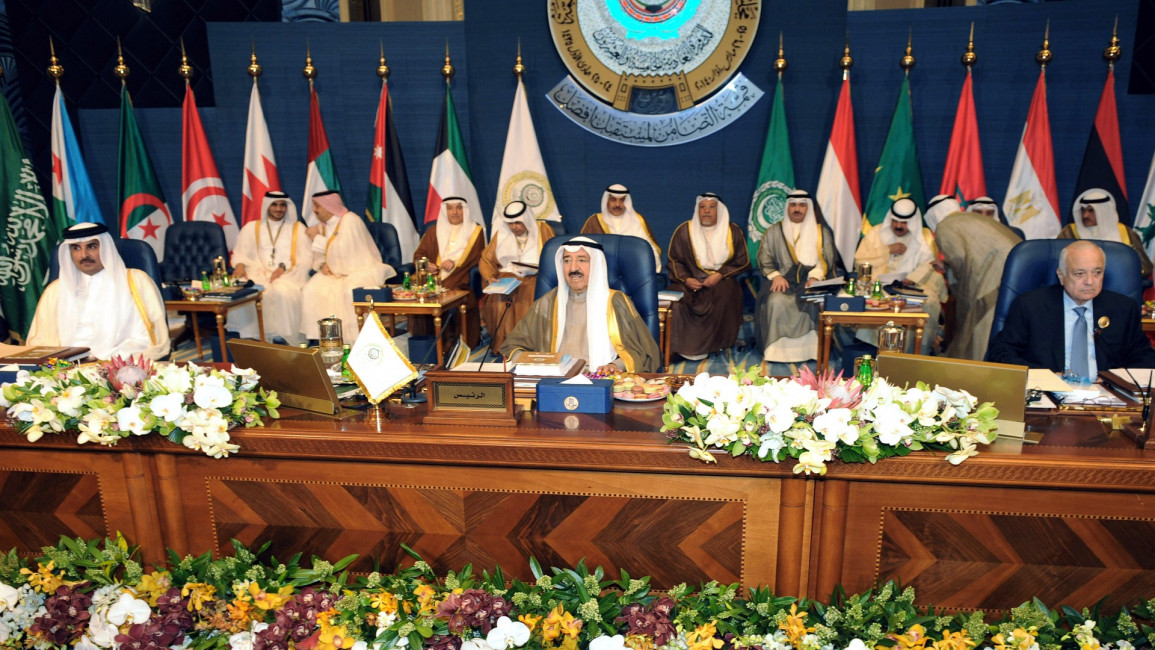
The joint Arab military force: One answer, many questions
The most prominent outcome of the recent Arab Summit in Sharm el-Sheikh is the decision to form a "joint Arab force for a swift military intervention" as per the concluding statement of the summit.
The force is primarily tasked with "swift military intervention missions and other related tasks to confront the challenges threatening the security and wellbeing of the member states and Arab national security in general, including threats coming from terrorist groups, at the request of the countries in question".
Many irrelevant questions have been asked about this decision, and can be attributed to either the political aspect of the resolution - particularly among parties promoting the idea - or the technical and strategic aspect of such a military alliance; its objectives, headquarters, leaders, members, budget and geographical scope.
| Egypt has pioneered the idea of a pan-Arab fighting force. |
Egypt has pioneered the idea of a pan-Arab fighting force.
For two months, Egypt's Abdel Fatah el-Sisi has been attempting to push the idea and has strived to see it implemented - especially after he unilaterally launched airstrikes on Darnah in Libya in retaliation against the Islamic State group's murder of Egyptian workers.
His proposal was not initially welcomed, and many Arab countries rejected it, including several of Sisi's allies.
However, after Yemen's crisis eached breaking point and a war on the Houthis was launched, the idea of a joint Arab force gained ground and was eventually endorsed by the Arab League.
Difficult questions
Questions about the sides targeted by this force, or the potential enemy in question, seem very important for measuring its success or failure.
According to the Arab summit's resolution, the force will deter any threats to the safety and security of the Arab countries. A logical question arises here: Is Israel within the scope of targets that fall under the category of enemies? Or is it only a question of Iran?
This leads us to further questions: Who will identify the nature of the targets and what criterion is to be used?
What if the member states disagree over the targets and enemies? The most important question is this: What if the source of threat comes from one of the member states themselves, such as an uprising against an Arab regime?
Will the joint Arab force quell this uprising, or will it side with the people?
These seem like legitimate questions to ask. Who will spearhead this joint force, Egypt, Saudi Arabia or any other country? How will this country be selected? Will the Arab states who have disagreements with Egypt or Saudi Arabia accept this?
This ambiguity around leadership leads us to a question about the headquarters. How will the country hosting the force be chosen? On what basis? Will the headquarters be based on the size of each country's participation or on the scale of threats and challenges it faces?
Nevertheless, one cannot ignore some very important questions on the countries participating in the joint Arab force.
According to the Arab summit's resolution, membership is optional. Will this force be used against non-members? What if a conflict breaks out between members themselves? How will the force act? Will the decisions made by this force be binding for other member states in the Arab League or only the member states of the force? What if one Arab country opposes the action of this joint force?
| Who is to determine the limitations of its actions? What if the member states fail to reach an agreement over the geographical scope of its work? |
The financing of the joint Arab force is no less important, not only because the funding will determine the weights of the participating countries, but because it will influence the political and strategic directions of member states.
How will the force overcome the imbalance in financing among member states? How can we guarantee this force won't turn into a militia serving the interests of the financiers?
On a final note, a major question arises on the geographical and strategic scope of this joint force and whether its action will be only confined to the Arab region or extend further - to Iran, for example.
Who is to determine the limitations of its actions? What if the member states fail to reach an agreement over the geographical scope of its work? For example, what if a member state decides to interfere in Iraq or Libya to secure its own interests? In the event of a conflict, to which side will the force be inclined?
Above all, the main question pertains to "terrorist groups", as cited in the summit's resolution.
Who will determine who these groups are? Can we guarantee that the designation "terrorist" will not be politicised and manipulated to serve broader political goals - as is already the case in Egypt and elsewhere?
These questions and others show that even though the very idea of forming a joint Arab force seems useful, it could lead to trouble and major divisions in the future.
One thing for sure is that the decision to form this force was not thoroughly studied and examined, which means we could be on the brink of a new Arab geopolitical blunder.
This is an edited translation from our Arabic edition.




